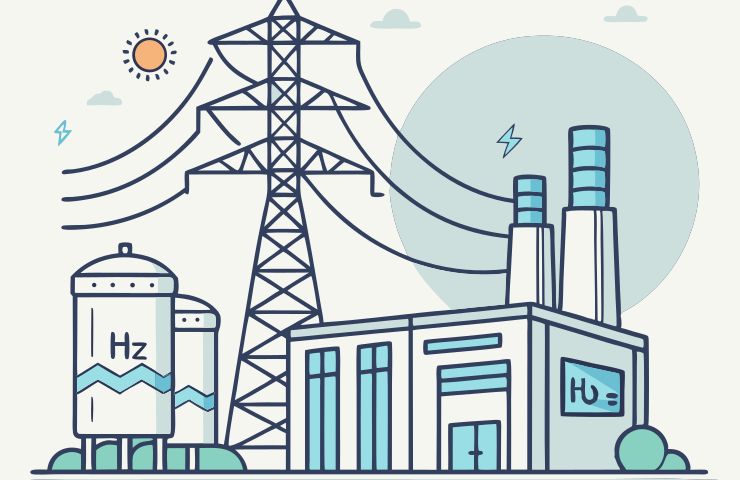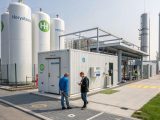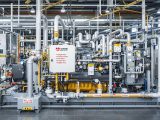
South Korea Commissions Largest Hydrogen Fuel Cell Plant in Ulsan Using Zero-Emission Technology
June 26, 2025Lotte SK Eneroot Corp. just flipped the switch on something big. On June 25, 2025, they officially launched Ulsan Hydrogen Power No. 2—a brand-new, 20MW hydrogen fuel cell power plant in Ulsan, South Korea. It’s now the largest facility in the country running entirely on hydrogen, no fossil fuels in sight. This marks a serious move forward in South Korea’s drive for industrial decarbonization and its plan to embrace zero-emission technology.
A Plant Like No Other
This isn’t your average power station. Built by Lotte SK Eneroot—a joint venture between SK gas Ltd., Lotte Chemical Corp., and Air Liquide Korea Co.—the plant cranks out around 160 GWh of electricity per year. That’s enough clean energy to power roughly 40,000 homes, without even touching fossil fuel backups.
It all runs on byproduct hydrogen pulled from nearby petrochemical facilities. The plant uses this hydrogen to generate electricity via advanced hydrogen fuel cell technology, doing it all with zero carbon emissions.
And they’re not cutting corners. The system includes modular fuel cell stacks paired with waste heat recovery setups—squeezing out every bit of efficiency without adding to the carbon footprint. Plus, it’s already prepped for a green upgrade. Once green hydrogen becomes more common, the plant can switch over seamlessly. No expensive retrofits needed.
Why Ulsan Was the Obvious Choice
There’s a reason this project landed in Ulsan. As South Korea’s industrial powerhouse, the city’s known for its sky-high energy demand, massive chemical sector, and an already-established hydrogen infrastructure. It’s the perfect testing ground—and the government knows it. They’ve been backing Ulsan’s push to become a national hydrogen technology hub under Korea’s broader hydrogen development roadmap.
At the launch event, company leaders highlighted what this project really means. “With the successful commercialization of this plant, Ulsan strengthens its role as a leading city in Korea’s hydrogen economy,” they said. Lee Young-jun, CEO of Lotte Chemical, called the plant “a cornerstone in our path toward a scalable hydrogen energy future.”
One Down, Three More to Go
This is just the kickoff. Ulsan Hydrogen Power No. 2 is the first of a planned series—four hydrogen-only fuel cell power plants scheduled to be up and running by the end of 2026. Altogether, they’ll add 80 MW of hydrogen-powered capacity, making this the boldest hydrogen production push South Korea’s ever seen.
The system is built to be as future-proof as possible. Each plant uses a flexible, modular design that supports quick and easy upgrades. When cleaner sources—like ammonia cracking or electrolysis-based hydrogen—start scaling up, these facilities will be ready to plug and play.
Team Effort with Big Impact
Behind this project is a powerhouse partnership with clear roles:
- SK gas delivers the byproduct hydrogen from its industrial operations.
- Lotte Chemical brings its expertise in chemicals and leads energy transition strategies.
- Air Liquide Korea offers cutting-edge engineering and global hydrogen fuel cell know-how.
It’s a collaborative model that hits on all the right themes: low emissions, smarter hydrogen use in industry, and a real push for zero-emission technology that’s built to last.
Clean Energy with Real Benefits
Here’s what this means on the ground: tens of thousands of households powered by clean energy, fewer industrial emissions, and brand-new job opportunities in South Korea’s emerging green tech sector. And let’s not forget—the localized hydrogen infrastructure being developed here sets the stage for even more, from fuel cell vehicle deployment to hydrogen exporting in the near future.
Put simply, South Korea’s big ideas around hydrogen are starting to take shape—and Ulsan’s showing how it’s done.
What Comes Next
This isn’t just a one-off power project—it’s a model for future hydrogen fuel cell plants. If it works well (and all signs point to yes), it’ll prove that hydrogen can move beyond backup generators and take a front-line role in powering cities cleanly and reliably.
And now, with the plant live, the real test begins: How well will it perform? How fast will the next ones roll out? Those answers could shape not just Korea’s future energy plans, but set the tone for hydrogen’s global potential.



 With over 15 years of reporting hydrogen news, we are your premier source for the latest updates and insights in hydrogen and renewable energy.
With over 15 years of reporting hydrogen news, we are your premier source for the latest updates and insights in hydrogen and renewable energy.